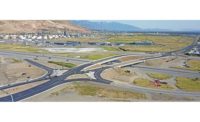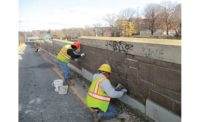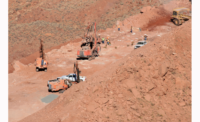U.S. 31 Hamilton County Reconstruction
Westfield, Ind.
Best Project
Owner Indiana Dept. of Transportation (INDOT)
Lead Design Firm CHA Consulting Inc.
Contractor Rieth-Riley
The transformation of 12 miles of signalized roadway into a full freeway was no easy task. The project team overcame major challenges involving land acquisition and soil conditions to deliver the $516-million job two years ahead of schedule and more than $100 million under budget.
Designed to create more efficient access between Westfield and Indianapolis, the project included the reconstruction and engineering of 46 bridges, 21 roundabouts and 11 interchanges. “The U.S. 31 project has ‘moved’ an entire city 15 to 20 minutes closer to Indianapolis, which opens us up to new residential markets and new possibilities for economic growth,” says Phil Sundling, engineer with the city of Westfield.
To get construction up and running ahead of schedule, the team planned and coordinated the acquisition of more than 300 parcels of land and at the same time relocated miles of utilities.
Soil preparation on site was also critical. The state’s Office of Geotechnical Engineering worked closely with the design team to create an expanded polystyrene (EPS) and lightweight aggregate to avoid excessive soil undercutting. Vibratory concrete columns (VCC) and aggregate piers were also used to reduce excavation.
To help reduce the city’s carbon footprint, U.S. 31 incorporates pedestrian access points at all overpasses, underpasses and interchanges, while bicycle access was coordinated with respective local plans. Sidewalks and shared use paths were developed in consultation with a pedestrian/trails subcommittee, which consisted of the project team along with designers and planners from local cities and neighborhood associations.
The 21 new roundabouts constructed for the project represented some of the first ever built by INDOT. To make them as efficient as possible, the team created an innovative traffic analysis database using Synchro, a software program to study and evaluate different interchange configurations. Synchro allowed designers to develop a signal phasing and timing plan, which improved travel efficiency by decreasing the amount of traffic spillbacks into adjacent intersections.








Post a comment to this article
Report Abusive Comment